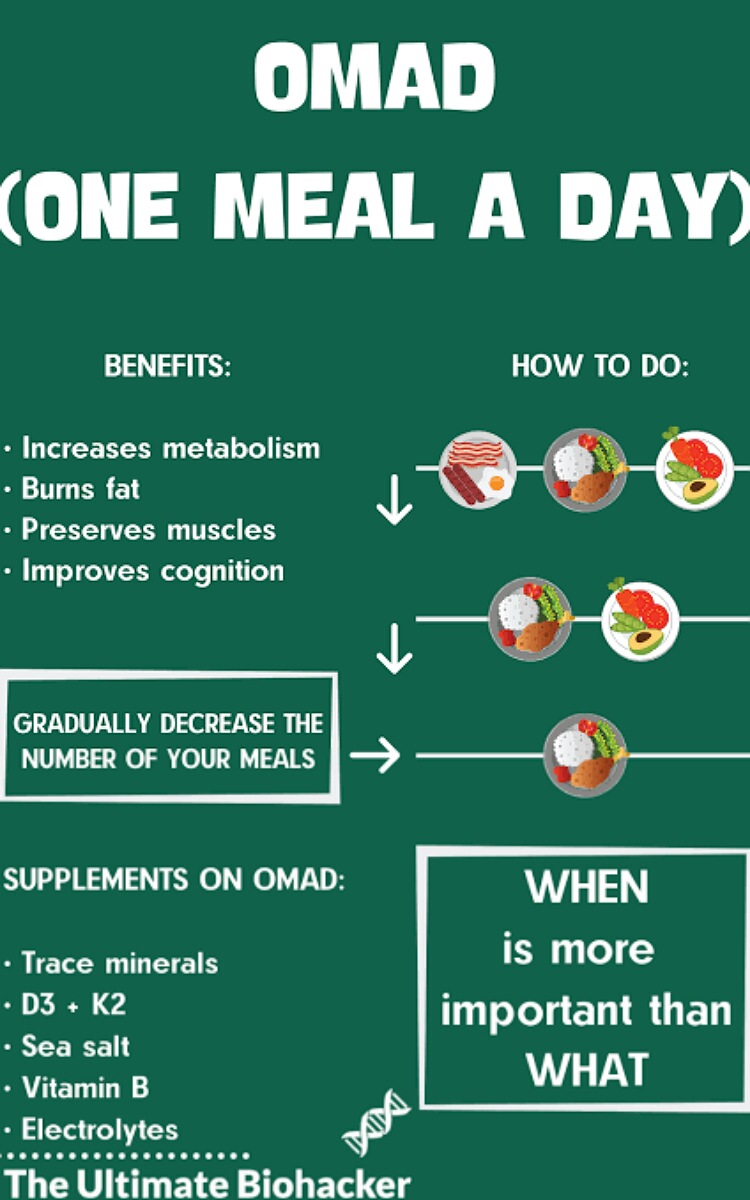OMAD diet is a diet for weight loss. In this there is fasting but it is different from intermittent fasting. What is this diet? Read to know all the details of it.
What is the OMAD diet?
People follow different kinds of diet in order to shed the extra body weight that they carry. Intermittent fasting is one of them. In this, the dieter fasts for a day or two in a week or for few hours of the day.
OMAD diet is a diet form in which the dieter consumes only one large meal in a day. Unlike intermittent fasting in which there is a window period of a few hours to eat, in OMAD type of diet, no such thing exists. The word OMAD stands for One Meal A Day.

In this diet, the person eats nothing for 23 hours and then consumes one large meal in a day within an extremely narrow period of one hour. After this, there is another fasting period of 23 hours and then one meal. Supposedly, this diet helps achieve the desired weight loss. Moreover, it also keeps chronic diseases and other health problems under control.
The diet details
The one meal should follow a consistent schedule. It cannot be had anytime but it should be at a fixed time of the day. And during the fasting period, one can consume beverages. But these should be free of any calories. Water and black coffee is OK to drink.
There is a standard size dinner plate on which the daily one meal can be taken. And the foods put on this dinner plate should not have a height of not more than 3 inches above the plate. The pile of vegetables should also be within this height limit.

But there is no restrictions on the type of foods to eat. Sports dietitian from Connecticut, Dana Angelo White, says:
“Other than that, dieters can (in theory) eat whatever they like,”
Another nutritionist from New York, Natalie Rizzo, adds:
“With the OMAD diet, you don’t need to consider your calories or worry about the exact nutritional profile of the food you eat, as long as you’re saving all of your calories for that one period of time.”
It is an extreme form of intermittent fasting. The window period to eat is extremely small. And the fasting period is very long.
Benefits and safety
This diet can achieve the weight loss in a person. Natalie opines:
“Other research suggests that intermittent fasting helps regulate blood glucose level, which may be therapeutic for those with diabetes,”
But the health benefits with this diet are temporary. The dieter will feel very hungry. He or she will lack energy and feel tired. There will be accompanying severe and uncontrollable hunger pangs and cravings.

After the fasting, one would be tempted to eat high fat foods like fries and hamburgers. But these could end up in you consuming more calories. The foods would be unhealthy and high is saturated fat and low in other vital nutrients. This is not right. They might also cause stomach upsets and bloating. Natalie explains:
“When someone deprives themselves of food for 24 hours, they tend to lose control and overeat when it’s time to eat again. This can lead to choosing unhealthy options and eating way more than what feels natural in one sitting,”
Dana adds:
“Sure, a well-balanced multivitamin and omega-3 supplement would be helpful, but I would still have concerns about dieters meeting their needs,”
If one follows this diet, it is advisable to eat balanced and nutrient dense foods during the eating period. And add variety of foods. Dana elaborates:
“Because our nutrient needs are so diverse, variety would be essential. Mix it up by eating different things every day, so you don’t miss out on nutrients,”
Also, read A new Chinese study: Intermittent fasting can reverse type 2 diabetes!
But best is to avoid this type of dieting. It is restrictive and can lead to nutritional deficiencies in the long run.
